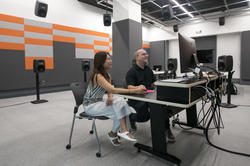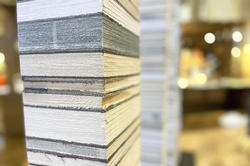Since opening in 2018, the spatial audio studio above the library has helped advance sound studies at RISD.
Studio for Research in Sound and Technology Broadens Academic Scope at RISD
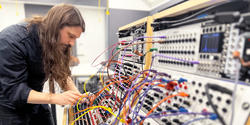
RISD’s Studio for Research in Sound and Technology (SRST, formerly known as the Spatial Audio Studio) serves as an interdisciplinary hub for sound design experimentation as well as research in sonic interaction, experience, composition and performance. Headed up by Professor Shawn Greenlee 96 PR, the studio is located on the mezzanine level of 15 West. It is now home to Research Fellow Alex Chechile, who is making use of its 25.4-channel speaker dome, digital audio software and programming tools, and Serge modular synthesizer in his empirical research, open source software and creative practice.
Here Greenlee and Chechile join faculty members Mark Cetilia MFA 08 DM and Michael Demps and current students Femi Shonuga-Fleming BArch 25 and Will Johnson to explain how the SRST contributes to RISD’s overall educational mission.
How would you summarize the SRST’s expanded mission?
Greenlee: It’s threefold: to continue supporting RISD’s curriculum, expand research possibilities in the space through external funding (strategic partnerships and grants), and foster public engagement via concerts, talks and workshops.
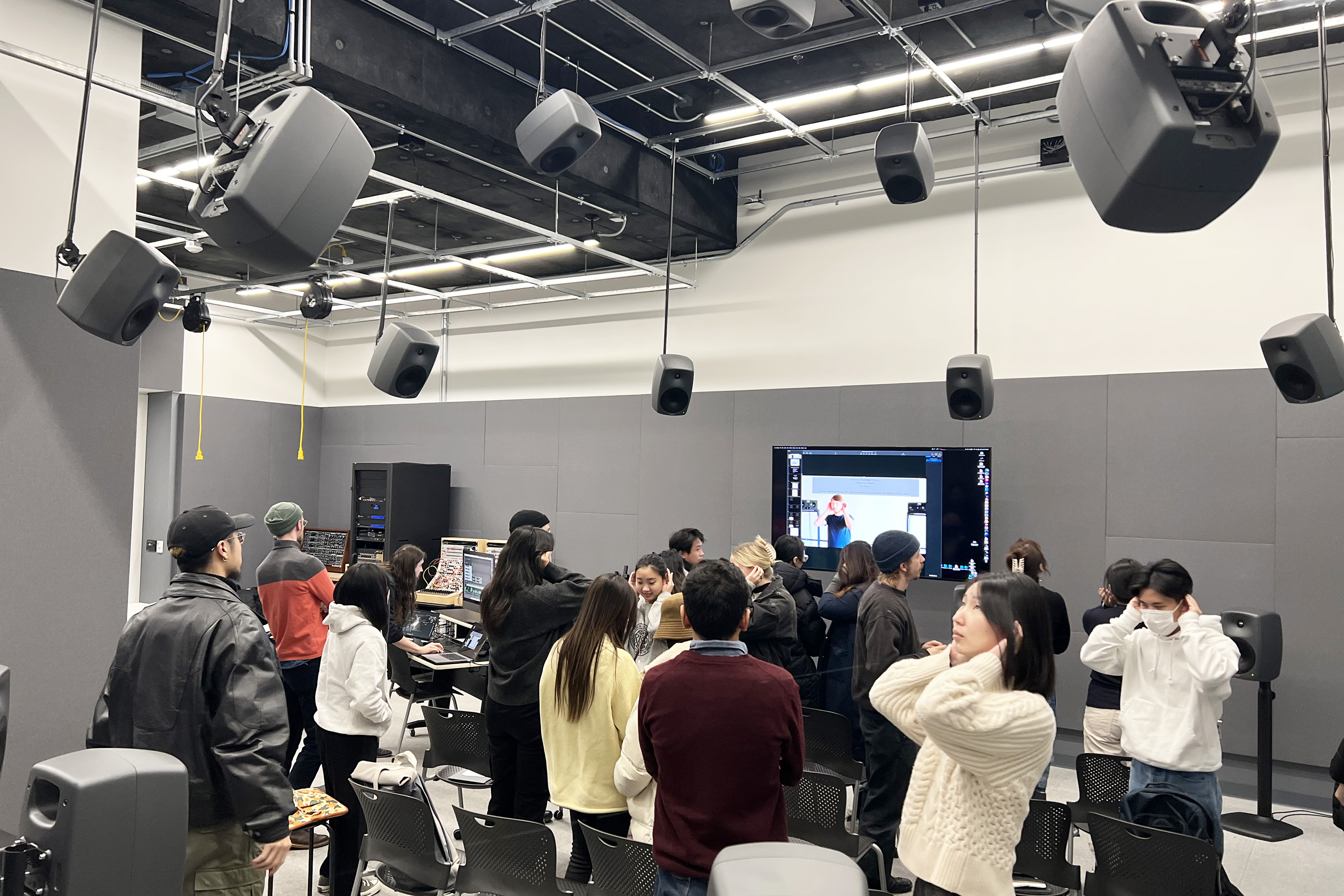
What research possibilities does the studio offer students and faculty?
Johnson: What’s really unique about the space is that you can conduct research in conjunction with materials, inside a framework for actually hearing and experimenting with sound. That radically alters how your research might unfold. Being in a space where sound is created in such an intentional way reframes the conversation and reorients the community.
Shonuga-Fleming: Even listening to existing music in that super-quiet space allows you to hear all the details in ways you never could before. And sound design is much more intuitive when you can hear everything.
Cetilia: In my Sound Synthesis and Sonic Practices classes offered through the Digital + Media department and Computation, Technology and Culture concentration, I try to offer opportunities for collaboration. Working with other people really opens up the way you think about making sound and engaging with it as a material.
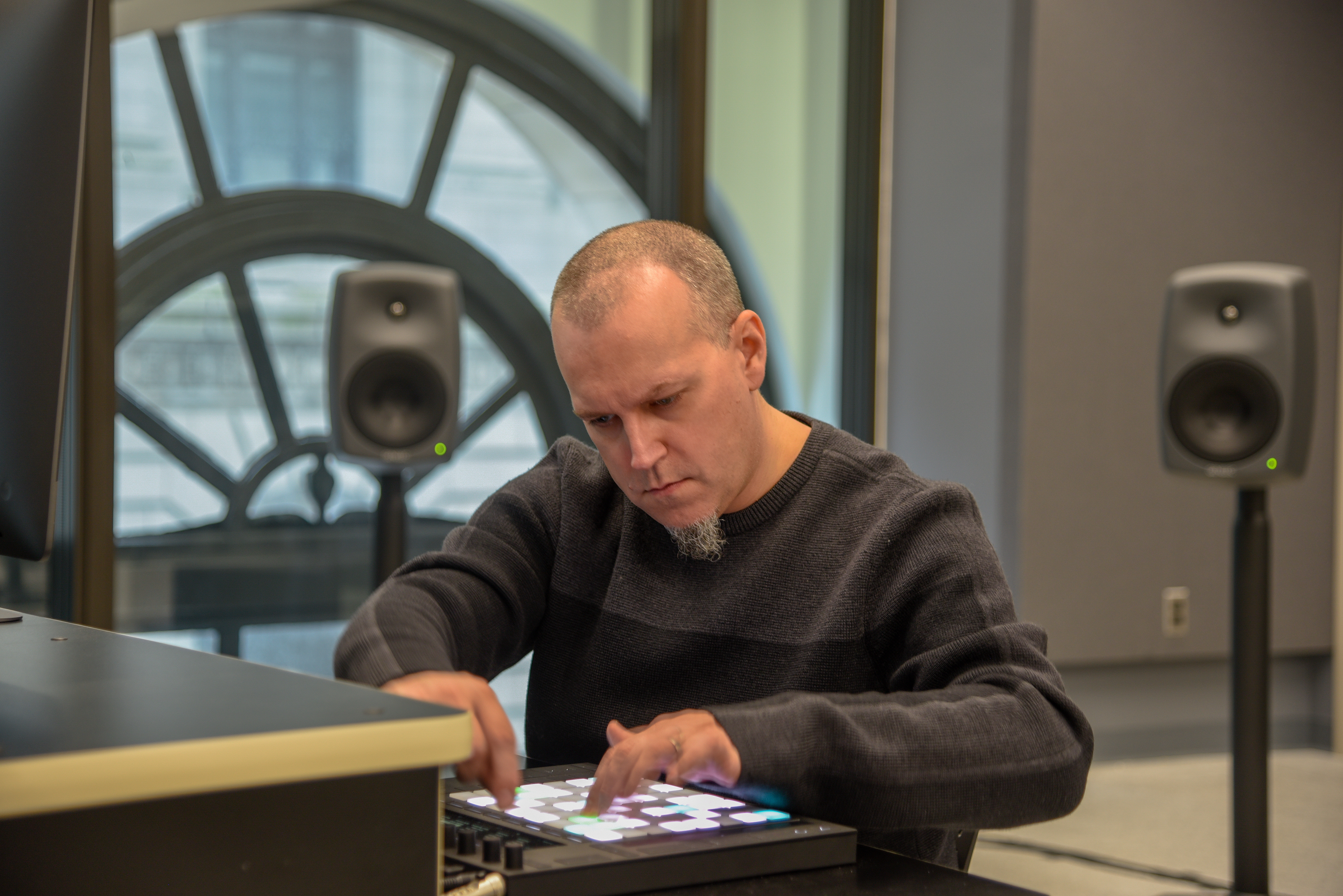
Greenlee: And it’s an entirely interdisciplinary space, which means it’s a great place for RISD students and faculty to connect with people in other departments.
How does sonic research relate to the mostly visual focus of RISD’s curriculum?
Johnson: I think that part of it is trying to conceive of sound as an invisible material and to understand how it relates to the larger, nebulous world of aesthetics.
Does the space provide new opportunities for students outside of, say, Digital + Media and Computation, Technology and Culture?
Greenlee: Absolutely, yes. Students are already working with sound, for example in the Film/Animation/Video department, but it’s also becoming more and more prevalent in other departments, like Painting and Sculpture, in which students are creating immersive installations and performances that incorporate audio components. Think about all of the headphones and loudspeakers you’re likely to encounter in a gallery exhibition. Sound design is also a key factor in many fields, including industrial design and graphic design, when multi-sensory experience is fully considered.
“Sound is becoming more and more prevalent in departments like Painting and Sculpture, in which students are creating immersive installations and performances that incorporate audio components.”
Demps: I teach Spatial Dynamics classes in the Experimental and Foundation Studies division, so I’m working with undergraduate students who haven’t selected a major yet. One assignment I’ve been giving students is to build an archive of their favorite places and pay close attention to the places’ sounds as a way to understand and navigate space. They organize the data in various ways and get really excited about the dimensionality or sculptural qualities of sound.
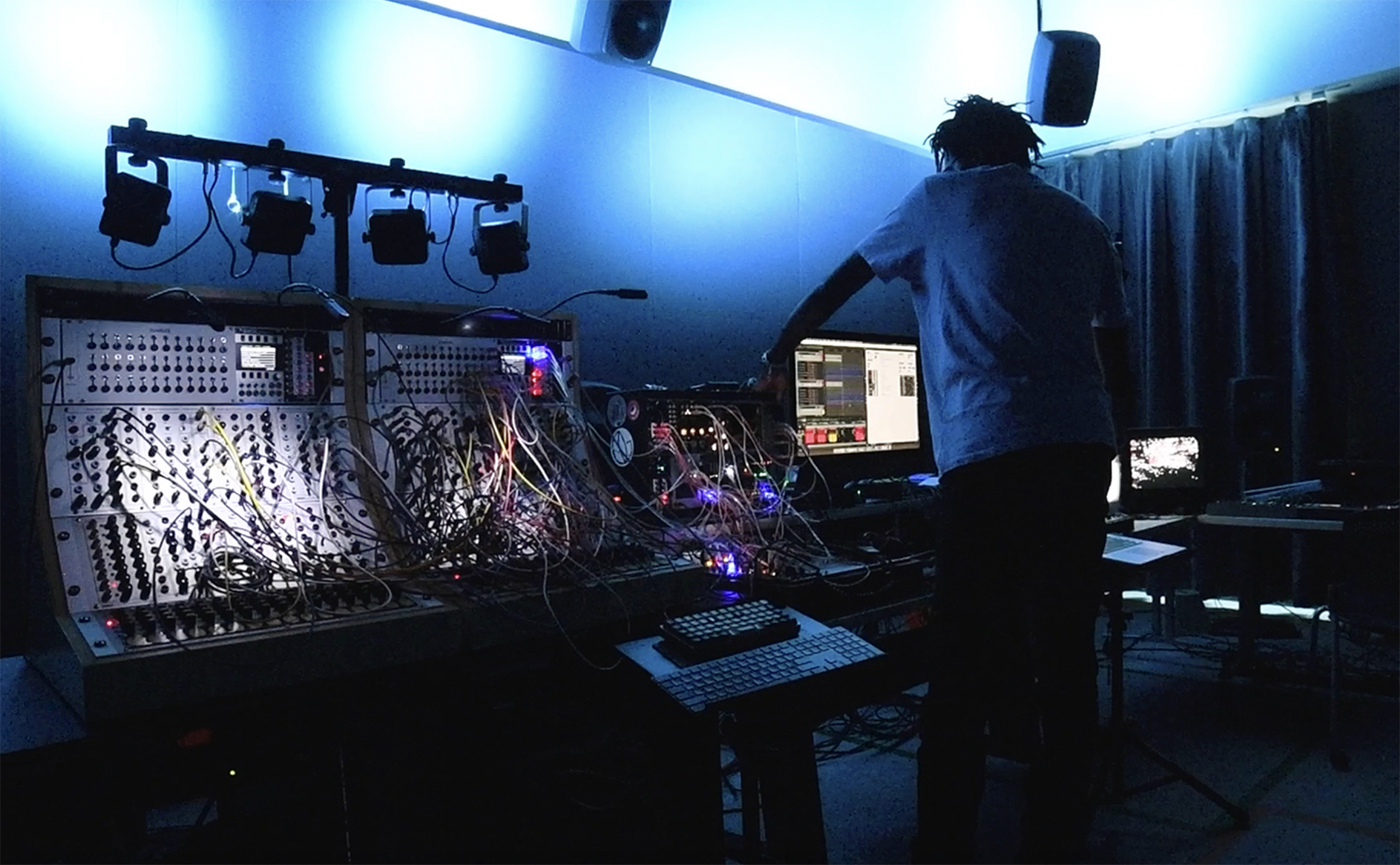
And my understanding is that Architecture and Interior Architecture students are SRST regulars as well?
Shonuga-Fleming: I’m studying Architecture, and part of what we’re learning is how to design acoustically. I also took Shawn’s Spatial Audio class, which really opened me up to thinking about acoustic space architecturally: how sound is positioned in space, what the acoustics of the room contribute, etc.
Alex, can you speak briefly about your research in the space?
Chechile: My research revolves around “difference tones,” which are sounds the ear generates in response to specific acoustic tone combinations. Difference tones are perceived as localized within the head, so they create an additional nested layer of spatial depth within the multichannel loudspeaker dome. To work creatively with these tones, I conduct empirical research in psychoacoustics, and the results can be used in medical fields and in the hearing sciences but also in instrument design and applied sonic arts. At RISD, I’m expanding my Ear Tone Toolbox software and writing new creative works that employ the phenomenon, among other projects.
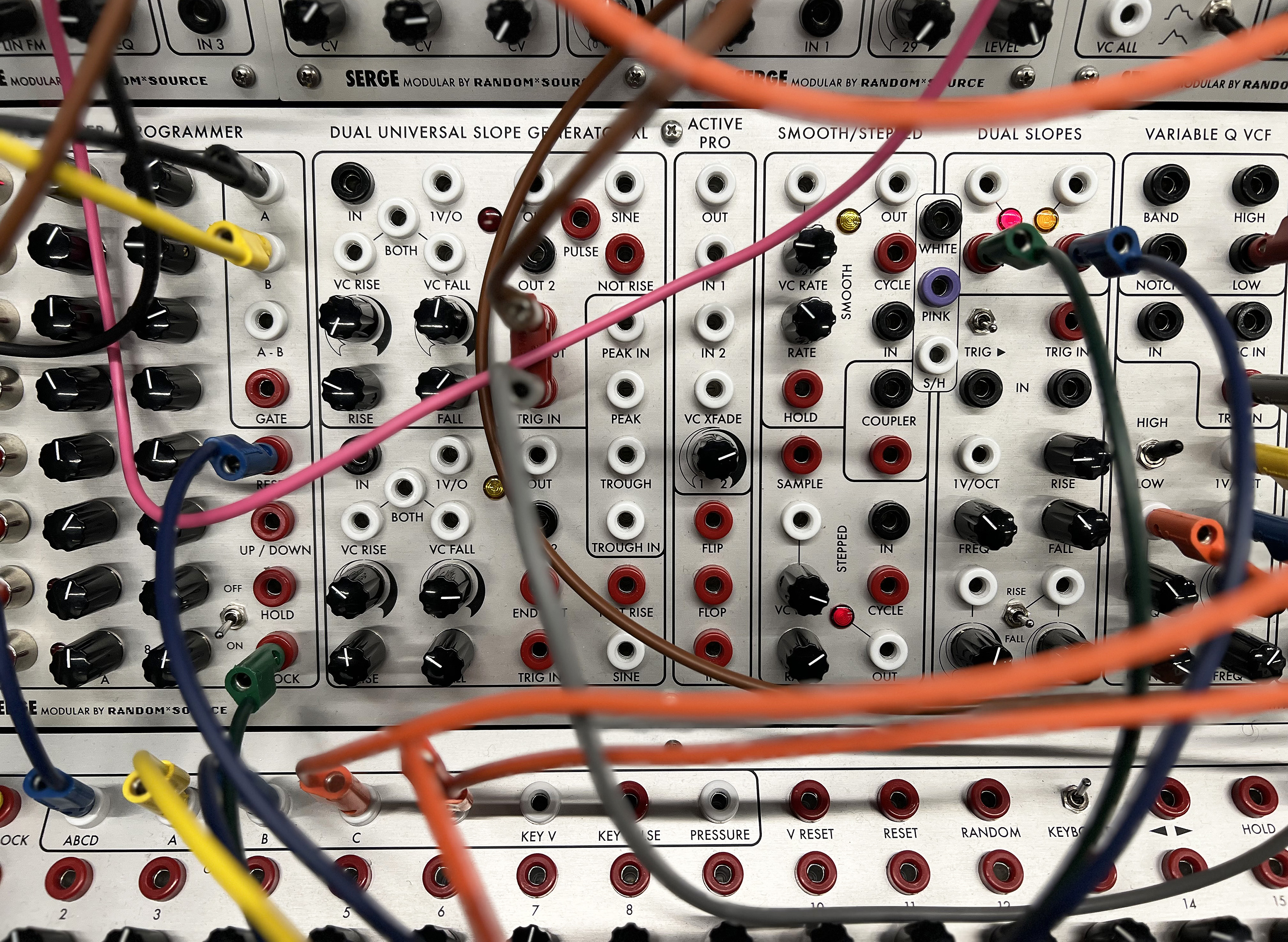
Tell me about the public performance series and specifically last fall’s conversation with multimedia artist Camille Norment, who investigates social-cultural phenomena through sound. How do such events facilitate exchange among practitioners and the public?
Demps: It was amazing: very informative but also grounded and down to Earth. It’s awesome to hear about how other folks are working, the problems they’re dealing with and how they’ve solved them. I always find inspiration in that.
Johnson: I’ve been following Camille Norment’s work for forever. It’s really philosophical. Norment is asking interdisciplinary questions about existence and engaging with people outside of the art world.
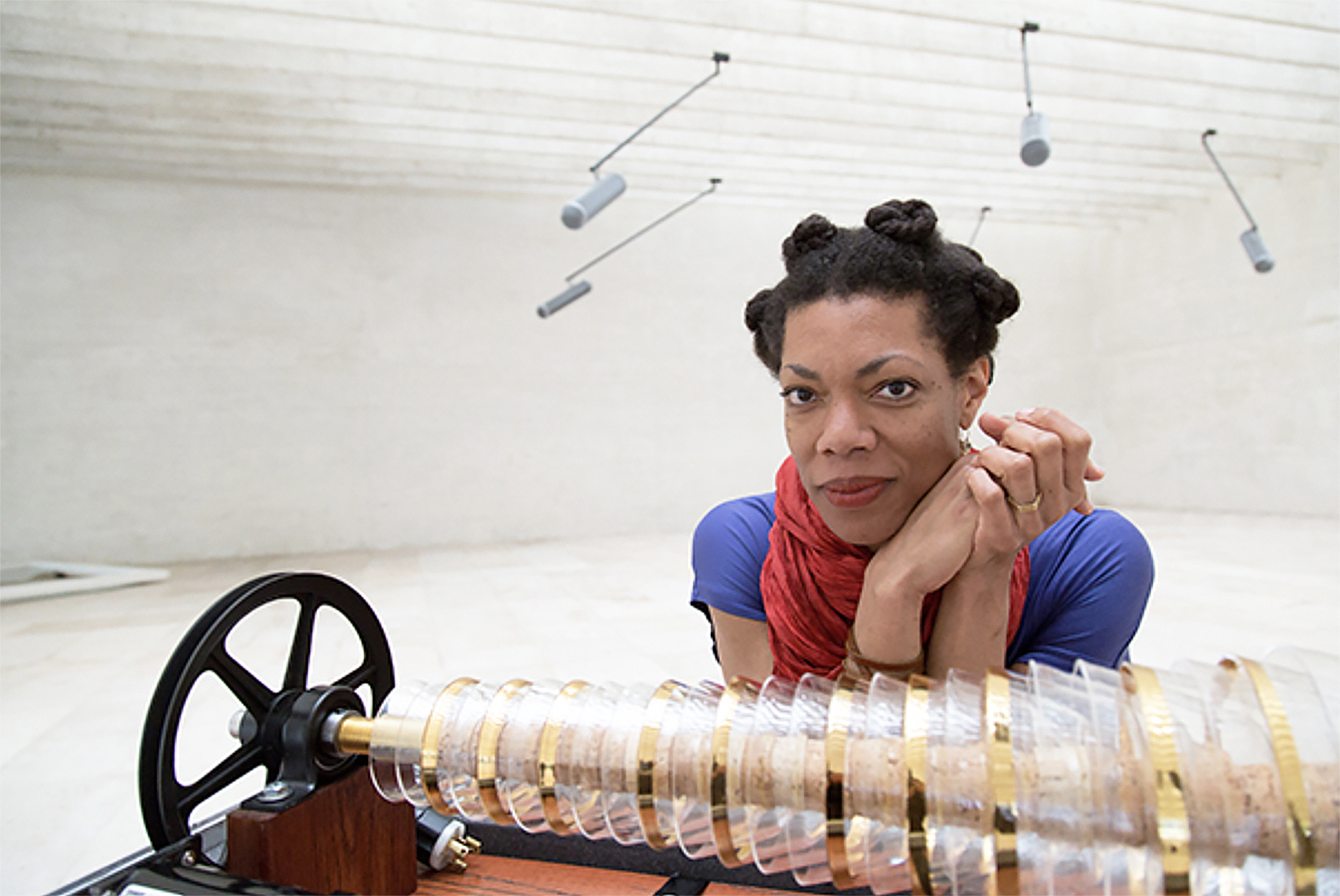
Greenlee: And it’s important to note that the event—an insightful discussion facilitated by Alex and Assistant Professor Jess Myers—was co-sponsored by the Architecture department and the Fleet Library, so it really brought the RISD community together.
Any last thoughts?
Greenlee: RISD’s Studio for Research in Sound and Technology is becoming a hub for new software, tools and ideas in the fields of sonic arts and sound design. It has been so exciting to see how the students leapfrog off one another’s research ideas. And I’m really proud of the way it bridges disciplines and provides context for those who want to seriously investigate sound at RISD.
—interview by Simone Solondz
January 23, 2023
